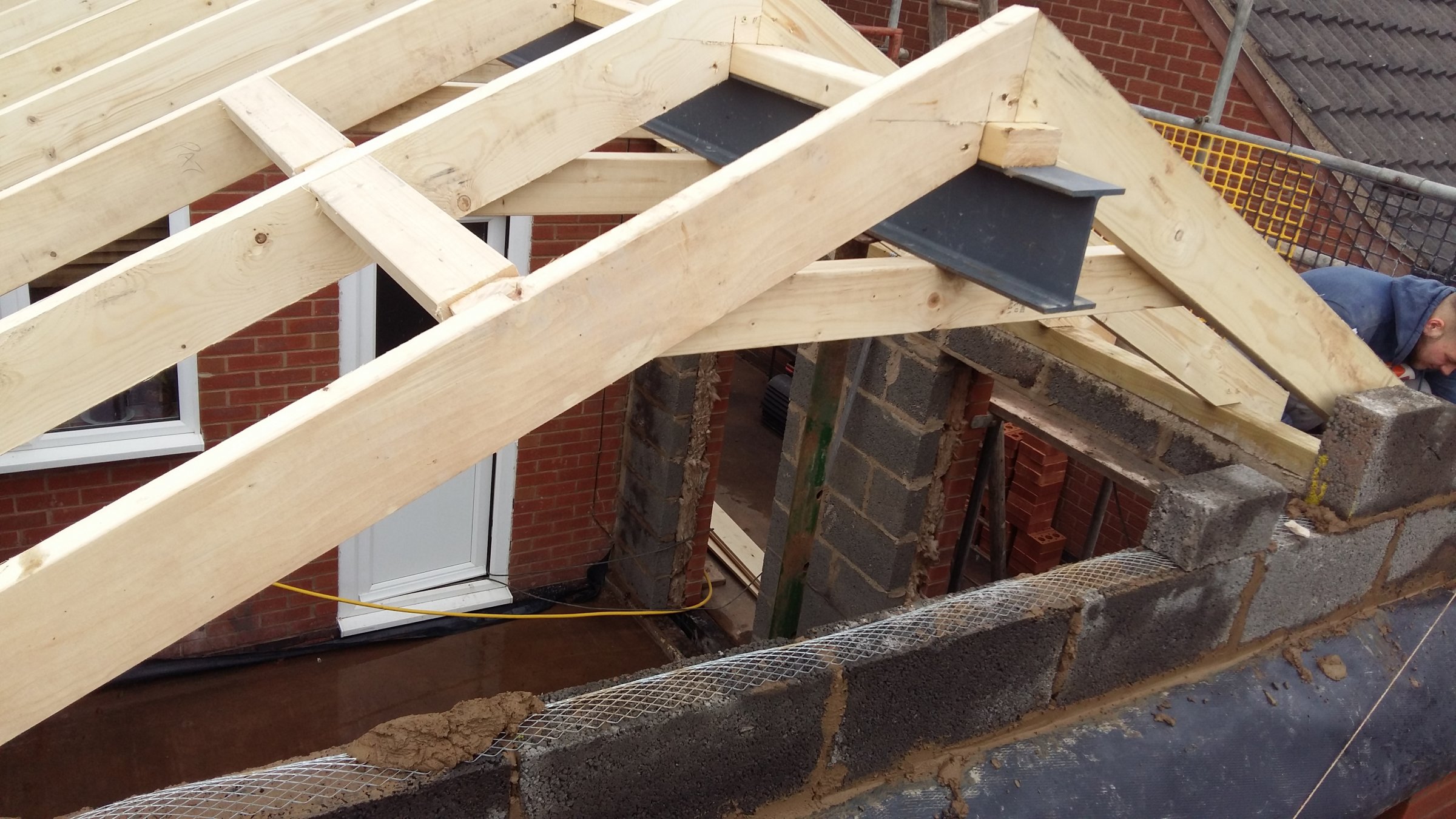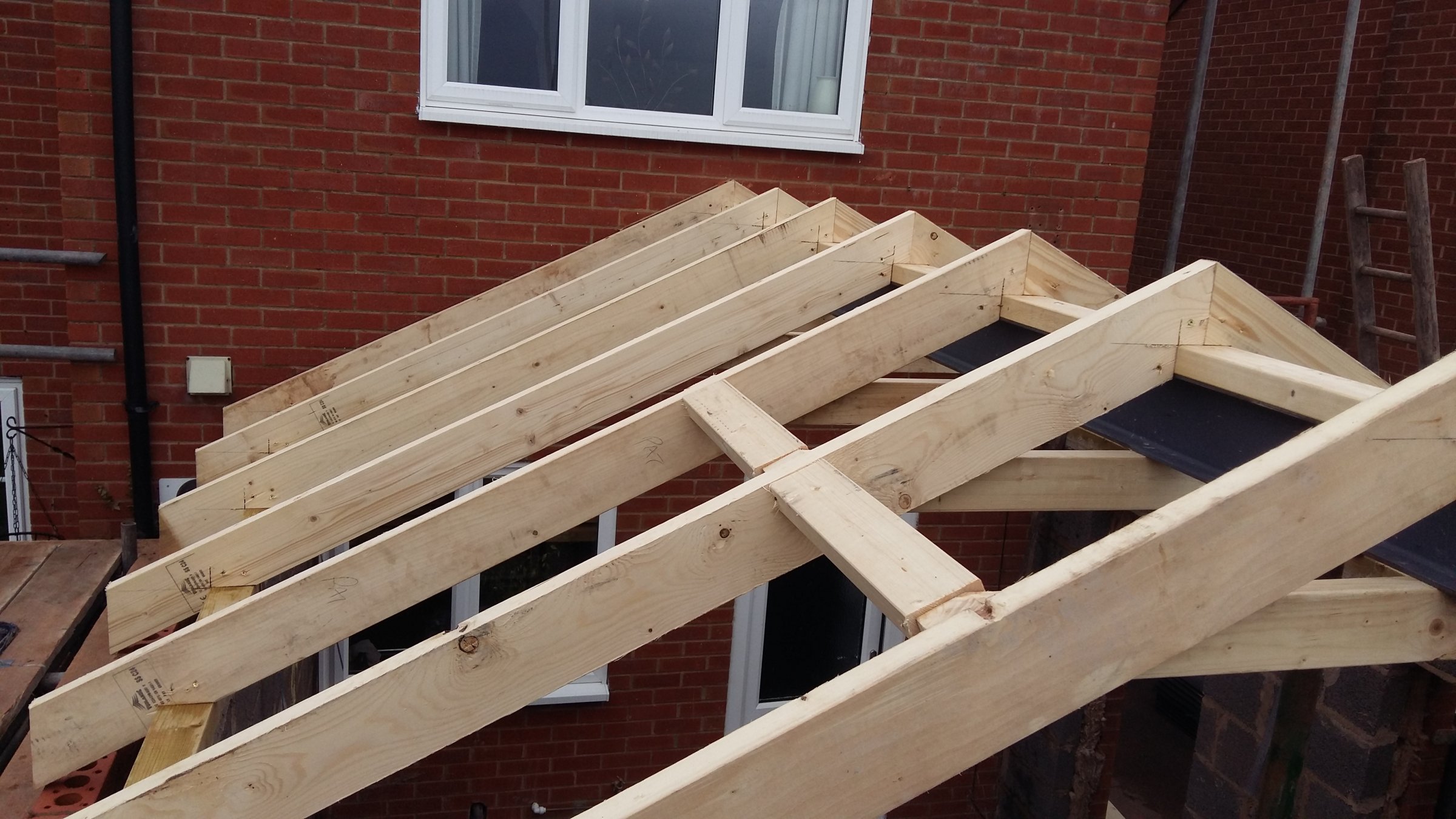Here's one we did last week.....
That's pretty much my design, although in a dormer bungalow format, so imagine two courses of blocks beneath the wall plates is where I have some floor joists- therefore no practical way of preventing roof spread other than a structural ridge.
Nose - do you have any more photos of the build up of your gable ladder? I can't decide if I should over-sail my ridge and wall plates and then just have another set of common rafters floating outside to take the barge boards, or whether to do it in small cross section timbers using a ladder design. What did you do in that scenario?



